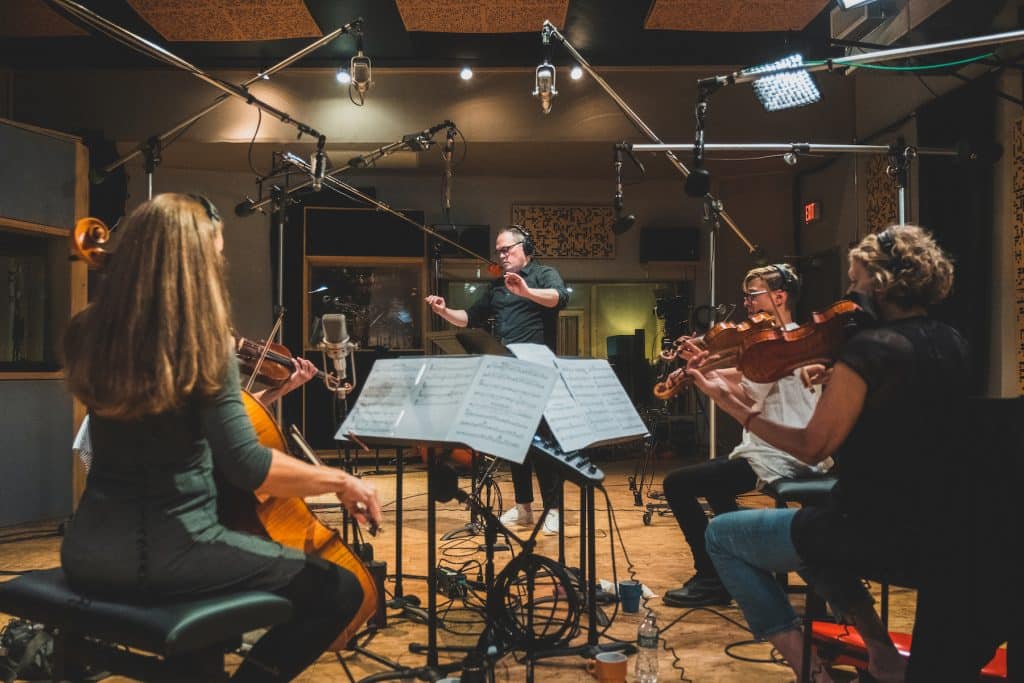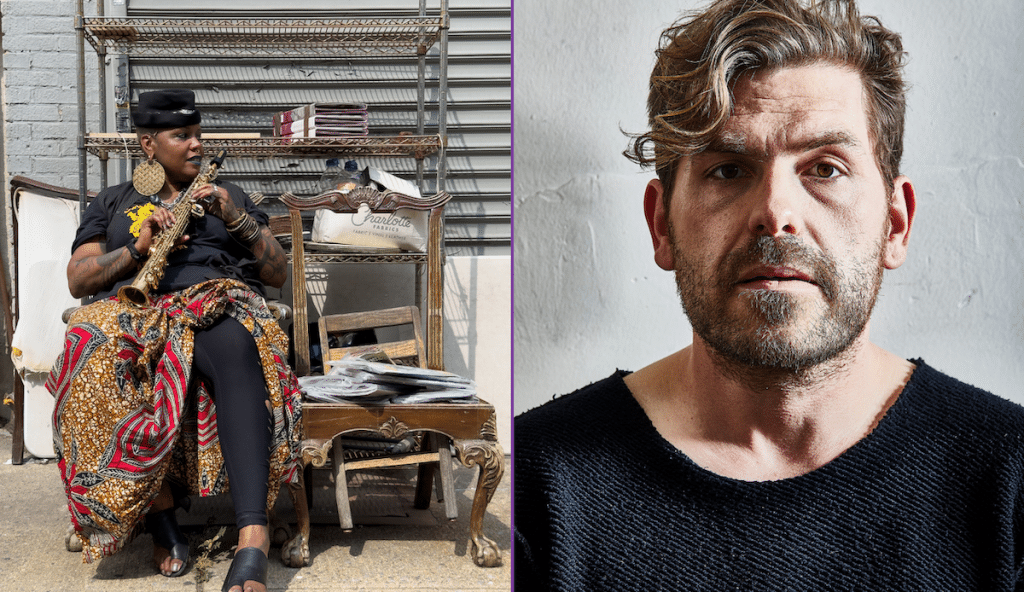Listening Large
How Ashley Capps fell in love with all sorts of music, and found a way to present its full range through his Big Ears Festival.
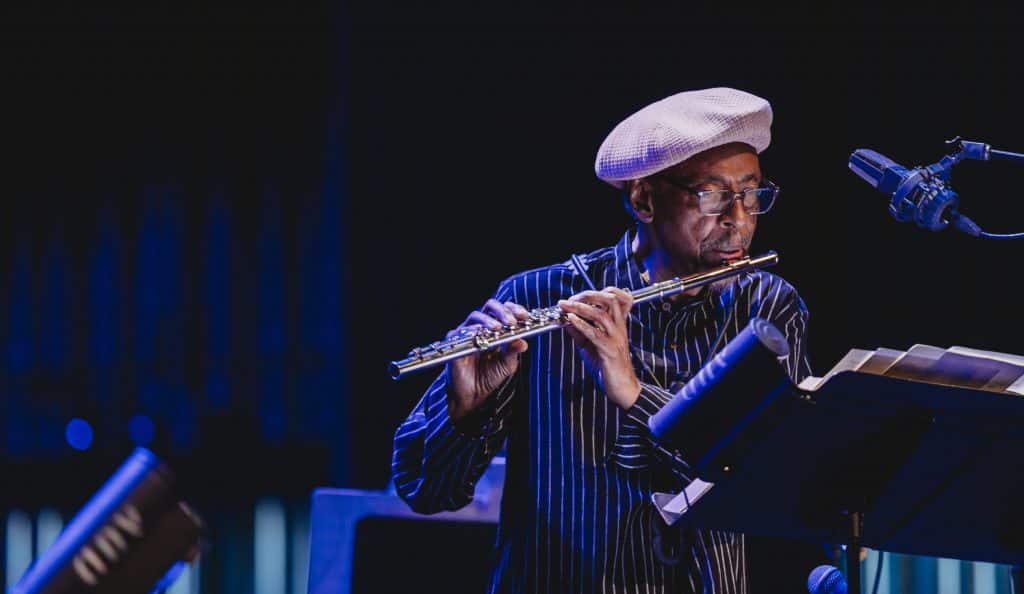
On a Saturday afternoon at the Old City Performing Arts Center, a former ice factory in Knoxville, Tenn., David Virelles coaxed thundering low-end crashes, dizzying single-note runs, gently hypnotic patterns, and gleaming overtones from a grand piano. His solo-piano performance was one among 50 on the third day of the annual Big Ears Festival, a sprawling four-day event that showcases cutting-edge improvisation, forward-leaning jazz, contemporary classical music, and more, while pledging allegiance to no single style or scene.
Five hours later, a few blocks away at The Standard, a converted warehouse, Virelles would perform again, in a reconstituted version of Make a Move, Henry Threadgill’s band of the late 1990s. Wrapped within the 2024 edition of Big Ears was something like a Threadgill festival, featuring five different ensembles that traced the saxophonist, flutist, and Pulitzer Prize-winning composer’s music through six decades.
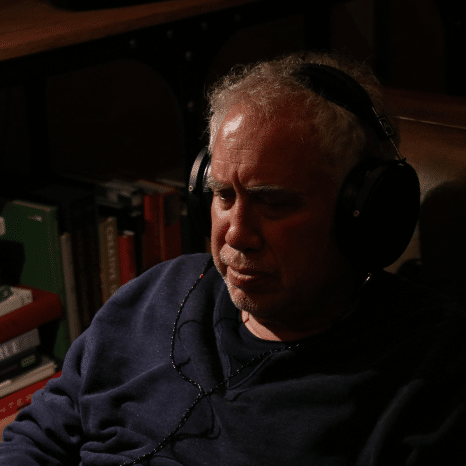 Ashley Capps
Photo: Courtesy of Big Ears
Ashley Capps
Photo: Courtesy of Big Ears
Virelles came to New York City 15 years ago from his native Cuba, via Canada, specifically to study with Threadgill. Now Threadgill sat smiling, nodding, occasionally chuckling at Virelles’s mastery and ingenuity. When the music stopped, after the applause, he turned to me: “In this country, there’s nothing else quite like this,” he said. “A festival that puts my music and his music together with string quartets and rappers and doesn’t favor one thing over the other, where people take artist talks and films seriously. We need this.”
As I headed up and down and back again on Gay Street, through the heart of Knoxville’s revived downtown, I popped in and out of more than a dozen venues, especially two lovingly restored ones— the cavernous, ornate Tennessee Theatre and the more intimately scaled but no less stately Bijou Theatre. Guitarist Fred Frith’s extended improvisations arrived like slowly revealed secrets. Pianist Jon Batiste’s bombastic pop was nonetheless flecked with thoughtful and virtuosic moments. Not one, but two, shows focused on the shakuhachi and other traditional flutes (performed by Shabaka, and by André 3000). I moved from the tenderness of saxophonist Charles Lloyd’s quartet to the force of guitarist Brandon Ross’s Phantom Station, from the emotional heft of violinist-composer Laurie Anderson’s “Let X=X” (with the band, Sexmob) to the relaxed charm of pianist Evan Lurie’s Quintet with Bandoneon. Threadgill was right; I needed all this.
Big Ears traces another nearly six-decade history, defined by the passions and inclinations of its founder, Ashley Capps, who began hosting a free-form music show on WUOT-FM, the University of Tennessee’s public-radio station, in 1979. Capps fell into music presentation almost accidentally. He rented a small church and sold 200 tickets for a concert by cellist Tristan Honsinger. Soon, he had his own club, Ella Guru’s, which presented New Orleans R&B heroes the Neville Brothers on its opening night in 1988, the alt-rock group Goo Goo Dolls just before shutting down two years later, and, in between, artists including jazz trumpeter Wynton Marsalis, country-music star Garth Brooks, and Nigerian juju music master King Sunny Adé. The company he formed in 1991 (and sold in 2020), AC Entertainment, co-founded the popular Bonnaroo Music & Arts Festival, whose financial success and somewhat free-wheeling booking policy helped inspire his launch, in 2009, of Big Ears. That first year, the two-dozen artists Big Ears presented included composer-performers Philip Glass and Pauline Oliveros, trumpeter Jon Hassell, and the avant-garde jazz trio, The Necks.
As he prepared for the 2024 edition, hosting more than 100 performers, Capps spoke to me about the arc of his musical awareness and his festival.
Have some people told you that Knoxville, Tenn. is an unlikely—maybe even crazy—place for an event like Big Ears?
Yes. I tell them that Knoxville is our secret weapon. It’s a nice town to visit, a great place to hang. It’s maintained its historic character and its downtown. It has fine restaurants and quite a few hotels. Most importantly, it has two historic theaters that are a block-and- a-half from each other. That’s almost unheard of, certainly in the South. Everybody can walk to all of the shows. This allows us to create the feeling of shared experience that is so important to a festival while still presenting in an urban setting. And the fact that it’s in an unexpected location allows us to have a visibility and a profile that would be hard to achieve in a major city, where there are so many cultural events going on all the time. I mean, you can basically go out in New York City and have your own Big Ears every weekend. But it wouldn’t be the same thing.
Are you a Knoxville native?
Born and raised in Knoxville, in a suburb that actually had a different name, Fountain City, when I was growing up. But it’s now firmly annexed into Knoxville, and has been for decades.
What was the music scene you grew up with?
When I was really young, my music scene was the elementary school band. I started out playing clarinet, and then I switched to saxophone. My father had been a drummer—not really a professional, but he had played gigs around town when he was younger. My mother had studied piano. They were both music fans. I could raid my father’s record collection and find Ray Charles’s country-and-western record or Miles Davis’s Kind of Blue and Sketches of Spain. Lee Konitz’s Motion, with [drummer] Elvin Jones and [bassist] Sonny Dallas, is one of the records I still have from those days.
I was just that kid, always into music. My older cousin took me to see James Brown when I was seven years old. My dad took me to see Duke Ellington’s orchestra at the Civic Coliseum when they came to town with Johnny Hodges. Living in Knoxville, music became a way of exploring the wider world. Music was almost like a kind of magic, and the musicians were like magicians.
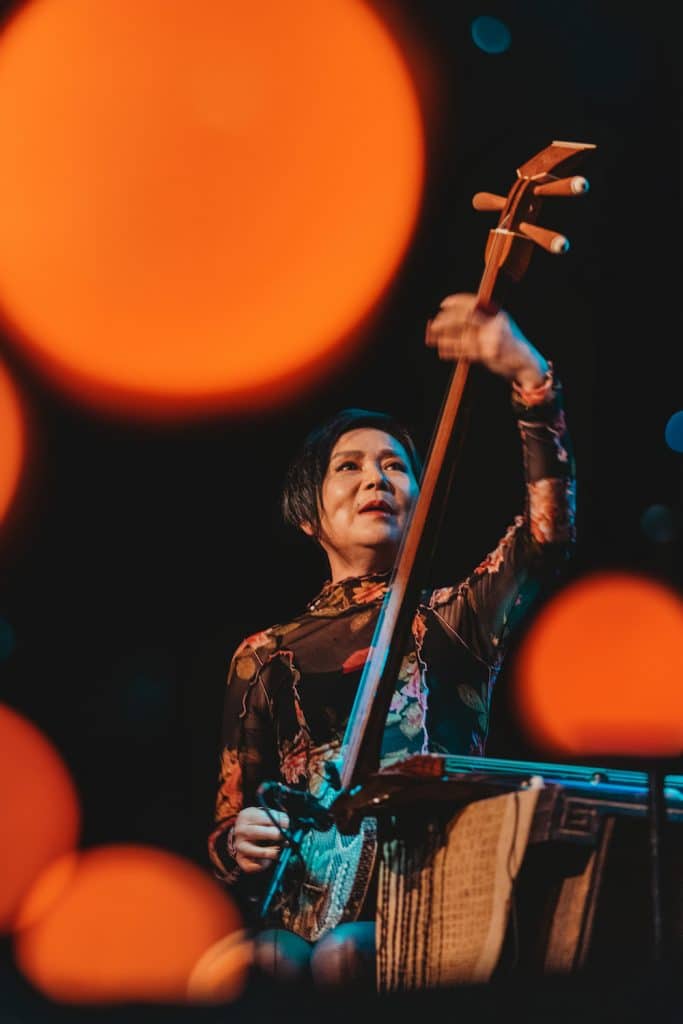 Min Xiao Fen at Big Ears, 2024.
Photo: Cora Wagoner
Min Xiao Fen at Big Ears, 2024.
Photo: Cora Wagoner
Did your radio show represent the first public expression of your musical tastes?
Yeah. I hosted “Unhinged,” which was basically a radio version of what Big Ears is now. I would go from the Art Ensemble of Chicago to Iggy and the Stooges to whatever. I started in ’79, and it ran for more than 20 years.
How did that turn into presenting music?
Through a series of connections, almost by accident. I was approached about setting up a show for cellist Tristan Honsinger, who I knew of only because he had just made an album with [guitarist] Derek Bailey. And somehow, I lured 200 people into paying $3 a pop to come see it, in 1979. It was a fantastic concert. Tristan is a surrealist as well as a great cellist. Back then, he would tell these crazy stories that his cello playing would accompany. So even if you were the kind of person who would’ve normally walked out after 10 minutes, the fact that he was telling these stories created this engaging experience. The Tristan thing gave me the bug. I was basically doing concerts as a hobby, but it was an increasingly serious hobby.
I guess it ceased being a hobby with Ella Guru’s, right?
Ella’s came about because a friend of mine who was an architect decided that he wanted to be a developer, and he saw potential in this area of town. He talked me into opening a club in the spring of 1988. I’d never run a club. It was also a restaurant, and I’d never run a restaurant. I call Ella Guru’s my wickedly intense graduate school. It lasted two-and-a-half years. I shut the doors without a plan, but I had developed relationships.
That set the table for AC Entertainment and the Bonnaroo Festival. And did the success of those ventures set the stage for Big Ears?
Yes, but Big Ears is really its own story.
How does that story start?
There are several threads. When AC Entertainment was launched, and as we became ambitious about promoting artists across the Southeast, one of our key venues was the Tennessee Theatre here in Knoxville, which is a really beautiful place. It had been saved from the wrecking ball by a local businessman. I said to him: I don’t know what you’re planning on doing with this, but why don’t you let me run it, and I’ll put a bunch of shows in here? Amazingly enough, he said yes. A few years later the smaller theater, the Bijou, had closed. And the then-mayor of Knoxville asked us if we could do the same thing for the Bijou.
It was always a challenge for me because I was never content to just follow the money. I had this impulse to share the music that I love. If you look at these early Bonnaroo lineups, you’ll see The Bad Plus, and Marc Ribot. We booked Ornette Coleman. At one point, we basically re-created the Village Vanguard—plywood walls, all red and velvety, with waitresses providing table service and a jazz band in the corner.
The most exciting thing about Bonnaroo was that it was a palette on which we could be creative and explore different ideas. I had gotten the festival bug. I love festivals because they’re social gatherings. It’s great to bring like-minded people together to share their love and enthusiasm. But most people were just trying to do the same festival over and over again. I started to wonder: What else can we do that’s even more creative? I had always been intrigued by the European festivals. Shortly before the start of Big Ears I went to All Tomorrow’s Parties, in the UK, and a really small festival in Norway called Punkt. Those helped give me the inspiration that there was something else possible.
Around the same time, I started hearing the influence of Meredith Monk and Philip Glass and Steve Reich in the music of Radiohead and DJ Shadow and The National. So many musicians were influenced by music that I love. I thought, Wow, nobody knows where this is coming from, but it would be cool if they did. So that was part of the impulse behind Big Ears, too. But I never imagined that Big Ears would ultimately have the impact and build the profile that it did.

Where did you begin?
Me and a couple of friends got together. We had conversations with musicians like Jon Hassell, who’s actually a fellow Tennessean. We thought: Let’s ask Jon, who was already planning a tour. Then we called Antony [now Anohni] and the Johnsons, who had just gotten on my radar screen. We thought: let’s invite Pauline Oliveros, let’s invite Philip Glass. And they all said yes. That was 2009.
Was the name Big Ears your idea?
Yeah, although I stole it from a friend of mine, a musician who always told me that I had big ears, in terms of my listening habits.
How did you translate that initial success into a sustainable strategy?
That’s a really good question. The programming is very intuitive and organic, but it’s also very influenced by the ideas of others— asking an artist what they want to do. Sometimes they see it as an opportunity to do two or three things. I have an opportunity to display several facets of their artistry.
One of my initial impulses was to try to break down the traditional tribal barriers between the different types of music and their audiences. The barriers get broken down anyway because many creative musicians draw freely from a wide range of influences and genres. That’s essential to what they do. Audiences tend to be a lot more fragmented, and in their own little tribes.
I think this is compounded in those instances where you have long-standing traditional culture institutions that have built an audience around a certain notion of exclusivity, if not class. It becomes a bit of a status thing, a place to be seen. I think younger audiences who are outside those scenes don’t feel welcomed into them, even though they might love the music if they had a chance to discover it.
The classic case is a symphony orchestra concert. That can be an amazing experience, but so many people don’t avail themselves of it because they’ve told themselves that this is something they don’t do. There’s the stereotype of the jazz purist. There’s the stereotype of the avant-garde purist, or even, the punk rock, DIY purist. Those identities can be hard to break down, but the spirit of our festival is to create an environment where people can flow freely into these different worlds, feel completely at home, and just discover what they might discover.

We seem to be in a moment when the traditional cultural centers are losing their monopoly on influence. Is it important that you’re in the South? Is there something distinctive about that?
Well, we talked about Knoxville being my secret weapon. But what you just touched on should not be overlooked. I’ve become increasingly committed to highlighting the South in various ways because, for one thing, the foundation of contemporary worldwide popular music is arguably the Caribbean to New Orleans, and up the Mississippi Delta to Memphis. Some of it went on to Chicago, some of it came over to Nashville, went through Knoxville, even over to the Carolinas. So, there’s this incredibly rich cultural diaspora, if you will, that is still very alive. And on top of that, you’ve got the Southern traditions of food and literature, which are in their own unique ways, edgy.
For whatever reason, the South has been kind of the red-headed stepchild of the United States. But I think, culturally, the South is naturally avant-garde because it always kind of thumbed its nose at the traditional standards of beauty or proper behavior, whether it’s in the style of singing or the playing of the fiddle. I feel like that’s still something our festival is just scratching the surface of, to be perfectly honest. I’ll never forget—in 2009, after Philip Glass was with us for an entire weekend, he told someone in an interview that “there’s something happening in the southern United States.”
In 2009, were there experiences that made you think: Hey, this is exactly what I was dreaming of?
There was an electrifying magic in the air during that first Big Ears. From the deep soulfulness of Antony and the Johnsons to Philip Glass’s quietly majestic solo-piano performance and cellist Wendy Sutter’s riveting performance of Glass’s “Songs and Poems for Solo Cello” to Pauline Oliveros, who conducted her Deep Listening workshops, it was a remarkable sequence of performances that moved me to no end. Jon Hassell’s performance was hypnotic and ethereal. It was like time stood still. You could have heard a pin drop in the Bijou Theatre.
There was a small audience of only a few hundred, just enough to fill the Bijou, which was our main venue that year. Some knew exactly why they were there, but others were attending out of a sense of curiosity and adventure, open but not quite sure what they were getting into. Yet everyone was swept away. It became clear that there was deep appreciation, almost a hunger, for these immersive, even spiritual, musical experiences.
In that sense, is Big Ears a shared ritual?
Yes. Also, it’s a challenge, and in some ways, it even feels like a little bit of a responsibility because like I said, I didn’t set out with the idea that it was going to have the kind of profile and impact that it’s had. It’s been exhilarating and very challenging to nurture that—to let it grow, but not let it grow too much. Even though it’s grown out of a very personal aesthetic, the potential that it offers for the community and for the region transcends me.
If Big Ears doesn’t stand for any one genre, does it stand for a shared philosophy about music?
This becomes somewhat hard to talk about, but yes, I feel like the collection of experiences that take place during a Big Ears weekend are—and this has become an overused word—transformative, in some sense of the word. They give a weight to the music that is increasingly difficult to appreciate in this world of streaming. You know, I’m an old guy [Capps turned 69 in March]. I grew up in a world where records and liner notes and the physicality of everything was an important component of understanding what music was. I discovered a lot of music by reading liner notes. Frank Zappa turned me on to Edgard Varèse. In some ways, the experience of music has become a lot more ephemeral. So now, a live performance that is presented in a way that supports a broader or deeper appreciation can be an unforgettable moment people carry with them for the rest of their lives.

